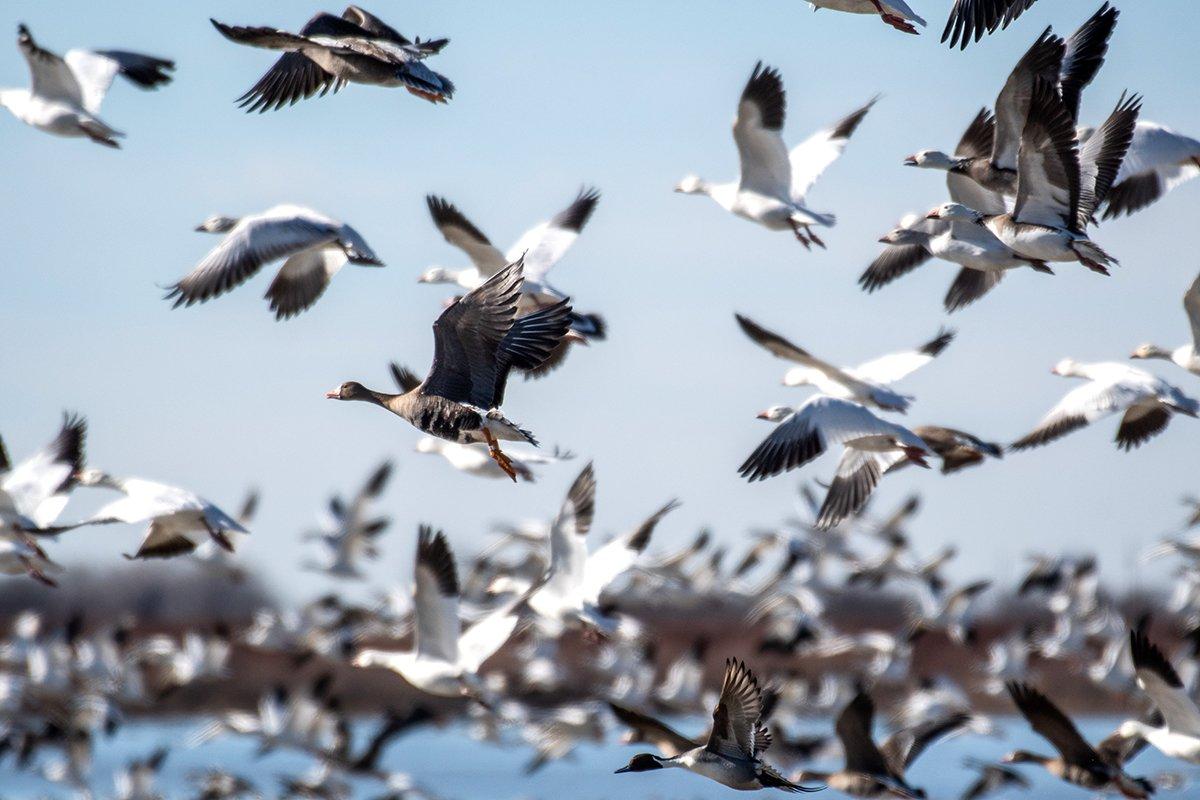Virus Can be Deadly But Shouldn't Affect Overall Numbers

A new form of avian flu continues to spread rapidly among North American bird populations, especially many species of migratory waterfowl, prompting media headlines and creating concern among duck hunters and other observers.
This strain (of avian influenza) really seems to be devastating for wild birds, especially waterfowl and the critters that eat waterfowl, Michelle Carstensen, wildlife health group leader and wildlife veterinarian for the Minnesota Department of Natural Resources, said in an April 15 article in the Duluth News Tribune.
Still, many scientists don't expect the virus to have long-term effects on waterfowl populations.
The flu is actually a highly pathogenic strain of avian influenza. According to an April 9 NPR article, scientists believe that migratory birds brought the virus to North America a few months ago. Now, with the spring migration in full swing, the flu has spread north rapidly, likely carried by migrating birds.
More than 40 wild bird species across 30 states have tested positive for the virus, according to the U.S. Department of Agriculture Animal and Plant Health Inspection Service. The virus has killed dozens of snow geese in Iowa, Missouri, and the Dakotas. Crows, raptors, cormorants, pelicans, and other waterfowl have also died. Further, various news reports say the virus has forced the destruction of more than 25 million domestic poultry.
Those numbers might make the situation seem grave, but biologists say it's too early to hit the panic button.
Waterfowl are known carriers of most strains of avian influenza, and in most cases, they are just that — carriers, said Taylor Finger, migratory game bird ecologist with the Wisconsin Department of Natural Resources. This strain, however, does seem to be impacting wild birds at a higher level than we have previously seen. However, that impact appears to be occurring in areas where birds are concentrating on their spring migration.
Finger said migratory birds will begin to disperse to breeding areas as ice melts, making transmission to other birds less likely.
Additionally, UV radiation and heat are the two primary factors that will dissipate avian influenza, so as spring and summer progress, we would expect to see fewer mortalities attributed to avian influenza, he said.
And although migratory bird die-offs from the virus might appear severe — such as a recent South Dakota snow goose kill reported by Outdoor Life — Finger said they're minor in the big picture.
The important thing to remember is that we are seeing, even in our worst mortality events, anywhere from a couple of hundred to a couple of thousand, which represent a relatively small number when compared to continental population estimates, he said.
Many wild birds infected with avian influenza don't get sick. However, symptoms might include head tremors, walking or swimming in circles, and an inability to hold their head and neck properly. Finger said people who see birds that appear to be ill should report them to their state natural resources agency.
They will then coordinate with the local biologist to reach out to the individual that reported the bird and find out more information on it and, if possible, collect the bird, he said. Do not collect the bird yourself.
The NPR report said the virus's risk to humans appears to be low. The CDC has monitored more than 500 people in 25 states who were exposed to infected birds, and none tested positive for the virus. In fact, only one person — a United Kingdom resident who lived in close quarters with ducks — has ever tested positive for this virus but showed no symptoms.
Click here for more Realtree waterfowl hunting content. And check us out on Facebook.






































